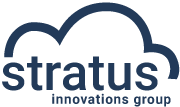Core requirements for a remote workforce

With the current public health crisis hitting continental US now, many organizations have adopted or are actively planning for a “work from home” model to minimize the potential health impact to their employees, partners, and customers. The critical task of setting up a remote workforce is to ensure they have the IT tools necessary to stay productive when they are working from home or remotely.
We at Stratus Innovations Group have a completely remote workforce due to how geographically distributed our employees are, and we have implemented this model since the inception of our organization in 2010. This blog will help you in identifying the requirements and tools needed to provide the infrastructure for employees to stay productive remotely, along with the governance model to ensure that your business will be able to continue to sell to and service your customer base.
Technology Tool Requirements
- Video & Audio Conferencing– The most important tool needed to support a remote workforce is a video & audio-conferencing solution. This allows your employees to schedule discussions with an option for sharing their desktop to provide the “being together” perspective. There are several tools available—such as Slack, GoTo Meeting, and Zoom—but we utilize Microsoft Teams for our conferencing solution because it has toll-free conferencing and desktop sharing integrated into our office VoIP phone system.
- Email Communication– With the introduction back in Exchange 2003, organizations using Exchange & Outlook had the ability for Outlook clients to connect to Exchange over the internet. With Office 365 and Gmail, this is even easier to set up now and enables access to email anywhere that has internet connectivity.
- Document Collaboration– With the addition of SharePoint Online document repositories and OneDrive in Office 365, the ability to access and share documents anywhere becomes simple. SharePoint Online document repositories are provided by default in Microsoft Teams, so having a central location for document collaboration and communication is easily provided, and all you need is an internet connection.
- Mobile Device Management (MDM)– While the workforce may be located away from your corporate environment, the need still exists to track and manage mobile devices (laptops, tablets, and smartphones). MDM tools apply policies to safeguard devices from rogue software and allow you to ensure that they have the most up-to-date security patches.
- Access to Back Office Systems– Equally important is the ability to continue to access your back-office systems (ERP, MRP, etc.) to enter in customer and vendor invoices and configure manufacturing product jobs. This is probably one of the most difficult tasks as it typically involves a virtual private network (VPN) connection back to your corporate office and corporate network, which causes concerns from an information security perspective. Many organizations have already moved to Cloud-based ERP/MRP systems like NetSuite, Dynamics 365, Infor, and Sage, but those who haven’t require this on-premise access. Fortunately, many of these on-premise ERP/MRP organizations already have some type of hybrid cloud model that includes IT infrastructure in Azure or AWS, and they can utilize this hybrid cloud model to provide “point to site” (P2S) connections in Microsoft Azure, which provides the remote client with direct access to corporate network resources.
Developing Governance Model
Setting up the technology tools to provide a remote workforce is only the first step. An important second step is putting in place the governance model to ensure a successful deployment.
- Information Security– By moving the workforce to a remote model, you lose the ability to utilize your enterprise information security tools, like intrusion detection/intrusion prevention systems. To ensure that you can still utilize information security best practices, governance models have to enforce security tools such as MDM mentioned above, and also establish multi-factory authentication (MFA) for the entire organization to dramatically reduce the probability of phishing and account hijack attacks occurring.
- Cyber Insurance Policies– If you have a cyber rider on your commercial insurance, verify that this covers a remote workforce.
- Updated HR Policies– Make sure that HR communication is provided to your organization on the policy for acceptable use for company equipment in a remote office/home office model, specifically stating what monitoring will be done and how the employee’s privacy will be protected. Make sure employees are aware of these policies and give their consent.
- Time Tracking– Organizations may want to enforce use of a time-tracking application for hourly/non-exempt employees. One of the benefits of working remotely is the flexibility to work around personal & family demands, where work may be completed very early or very late in the day (or on weekends).
Stratus Innovations Group: Innovative Solutions for Businesses
If you’re ready to learn more about enabling a remote workforce, please contact us today by calling 844-561-6721 or completing this brief online form.
References
Mobile workforce governance models from https://www.isaca.org/resources/isaca-journal/issues/2017/volume-4/mobile-workforce-security-considerations-and-privacy
ZDNET article on managing telecommuters from https://www.zdnet.com/article/managing-telecommuters-due-to-novel-coronavirus-here-are-8-management-tips/?ftag=TRE-03-10aaa6b&bhid=23831759558004612565037852143376
Support remote workers using Microsoft Teams from https://docs.microsoft.com/en-us/microsoftteams/support-remote-work-with-teams
The content provided here is for informational purposes only and should not be construed as legal advice on any subject.
